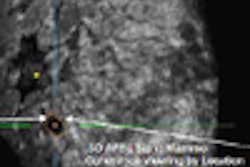
PACS is a wonderful thing, no doubt about it. My group was one of the first to go completely filmless, then paperless, thanks to the vision of one of my partners who has gone on to a better place ... Florida. Since 1993, we have enjoyed the benefits and paid the price of being early adopters. I would have to say the pain has been worth it, but the process has been a long one indeed.
The radiologists in my group have learned a great deal about the practical nature of PACS. While I will never be able to quote the DICOM standard like David Clunie, I can tell you something about how radiologists live with PACS day to day. To that end, I have distilled 14 years of experience into the following Dalai's Laws of PACS:
I. PACS is the radiology department.
This one is so obvious, but it is impossible for most to see. Once PACS is in place, the film is gone, and in a very real sense, the mass of wires and computers is the entire department. Yes, there are still modalities, CR cassettes, barium, and so on, but for all intents and purposes, PACS is the department's face to the world.
II. PACS exists to improve patient care. Its users are the radiologists and radiologic technologists. The entire goal of the PACS team is to optimize PACS function for its users.
Again, this is so big and clear but most have trouble seeing it. Yes, in theory, everything and everyone in a hospital or clinic exists to improve patient care, from the guy who mops the floor to the neurosurgeon, to the CEO (yes, the CEO thinks he is above the surgeons, and we'll let him hold onto his fantasy). In essence, we all work for the patients, not the CIO, not the CEO (and certainly not the vendors). There does seem to be some debate as to who should be considered the real users of PACS.
I admit to some degree of bias, but I have to believe that it exists for me, the radiologist, to use for patient care. Sadly, it is often IT that doesn't quite get this very important reality. The IT version of this law might read, "We provide PACS because it is made up of computers, which we own throughout the enterprise. We know far better than you do how our computers work, and what software will be easiest for us to maintain. We would be far happier if you would refrain from actually touching the mouse or the keyboard." OK, that's a bit over the top, but it is sometimes difficult to communicate to IT folks just how mission-critical PACS has become in patient care delivery.
III. PACS should be the shared responsibility of the radiology and IT departments.
Notice the word "should." PACS is one of those little projects that requires the help and expertise of a lot of folks. As in Dalai's Second Law, PACS is indeed at its core a collection of computers and wires, an IT project if there ever was one, right? But as per Dalai's First Law, PACS is the radiology department, governing everything from its workflow to its profit margin -- things understood best by radiology.
Therefore, I make the bold statement that management of this very important system should be shared. Sadly, it may become a political football, bouncing back and forth to the department that wields the greatest power and can draw the largest budget.
IV. Once PACS, never back.
A little PACS downtime provides a wonderful reality check. It becomes very clear in the first 10 minutes or so that we cannot ever live without our system again. Film? What's that? Is there a good downtime plan? Is there any downtime plan?
V. Workflow is inversely proportional to the number of buttons on the PACS desktop.
I cannot, for love, money, or excessive ragging on my blog, get some of the big PACS companies to understand this one. I was told by the head of a major PACS project from a major PACS company that its solution to providing a feature when you ask for A and I ask for B is to add a button that does both A and B.
Many modern systems have in this way become hyperconfigurable and suffer from the Lego-PACS syndrome -- that is, one can build the buttons on the interface in so many ways that the permutations would take a century to exhaust. The sad fact is, I don't want to be spending my time searching through a sea of buttons and menu items; I want to read my studies. There is a minimum feature set necessary to accomplish this simple goal, and beyond that, every extra function has the potential to slow me down.
VI. PACS should not get in your way.
A corollary of Dalai's Fifth Law: PACS exists to let me, the radiologist, look at my patients' images. Anything that gets between me and that image is a distraction, and gets in my way. Obviously, some of this will be necessary, but if I have to click excessively, or take 39 trips to the menu bar before I'm done with the exam, something is wrong.
VII. Speech recognition will be feasible when the CEO, CFO, and CIO use it for their correspondence.
This topic probably deserves an entire article of its own, as it always inspires a controversy. As I see it, speech recognition (it is not voice recognition, by the way) is a technology that has yet to be perfected. Comments on AuntMinnie.com and elsewhere indicate that the level of satisfaction is pretty low. But hospital administrators still try to push it on us. Why? Because they pay transcriptionists, and they don't pay us.
Therefore, if they can shift even some of the transcriptionists' editing duties onto the radiologists, they save money and look good come budget time. If it takes us an extra hour a day to do our job and do all the editing expected from a human transcriptionist, well, that's OK, right? Wrong!
So, here's my counter offer: When the members of the C-suite (the CEO, CIO, CFO, etc.) find speech recognition adequate for their correspondence, I will deem it worthy of review for use in the reports I issue as my stock-in-trade, the reports that clinicians rely on to make life-and-death decisions about their patients. Fair enough?
VIII. The degree of understanding of radiologist workflow is inversely proportional to the size of the PACS company.
While not a hard and fast rule, it does seem that smaller companies can be more innovative, and responsive, at least to a point. With some of the "Big Iron" companies, unlike Burger King, having things "my way" is simply not in the cards. The products of the larger companies seem to reflect the mentality of largess, and the phrase "bloatware" comes to mind. With this comes the anathema of the Lego PACS and obstructive designs I have bemoaned above.
IX. An average PACS consultant will take six months to tell you what you already know.
In many cases, consultants are brought on board not so much for their expertise in PACS, but to provide someone to blame in case the PACS purchase doesn't please everyone involved. A great deal of information is available on the Internet, both from the vendors themselves and from happy (and unhappy) users posting on sites like AuntMinnie.com. After perusing the available information, going through various demos and site visits, and communicating with other users, I think one can amass a fair amount of knowledge about the various systems out there.
Where the above-average consultant shines is actual negotiation of the deal, with the understanding of the subtleties and nuances of contracts and such. Yes, they have their place, but if you hire a consultant with the thought of picking your PACS for you, I would respectfully submit that you are simply avoiding doing your homework. Remember, no one knows your business like you do.
X. The delivery time of a patch for a malfunction is directly proportional to the square of the severity of the problem.
When breaking in a new system, as we have had the joy of doing here and there, glitches will inevitably become apparent. Most companies do try to fix problems, but when we throw in the subjective feeling of despair whilst waiting for a solution, the Tenth Law may seem to minimize the wait.
XI. A true PACS guru is worth his/her weight in gold.
There is absolutely no way in the known universe to successfully implement PACS without a guru. What is a guru? Someone who knows the PACS in and out, knows the radiologists and technologists better than his or her own family, and can make the system work for the end users, as per Dalai's Second Law.
The vendors can be relied upon to varying degrees, at least for the initial installation, but ultimately, there must be someone there on the ground to keep everything running smoothly. As of a year or so ago, I would have said that there were about 100 PACS gurus in the country. By now, there are probably a few hundred, but they are still the most valuable folks in the hospital. Trust me on that.
XII. Remember that you are the PACS customer.
Vendors have sneaky ways of disarming complaints: "You don't really need that function," "No one else does it that way," and "We're working on that, but we don't know when it will be available."
Don't let them get away with this bait-and-switch game. You wouldn't expect this sort of treatment at the Mercedes dealership, and most PACS are a lot more expensive than any car!
XIII. Drive before you buy.
I've been preaching this one for years now, and people still don't believe me. It is impossible to get the feel for a PACS graphical user interface (GUI) in a 10-minute demonstration, no matter how well it is presented. In fact, the better the presentation, the more chance that some smoke and mirrors are involved.
Ask, nay, demand, a demo of your own that you (not the salespeople) can pound on at will. Technically, this should not be a problem for any Web-based product, as there should be a demo server for just this purpose. The joys and pitfalls of various systems do not become apparent until you have actually tried to use them in a production environment.
XIV. The PACS needs to be operable by the least technically savvy radiologist on staff.
This is inspired by one of my partners who is one of the best interventional radiologists I have ever met. Ironically, he has great difficulties handling anything run by computer. I often tell the story (to embarrass him) about the time he called me from a plane about to take off to ask how to turn up the volume on his laptop so his children could watch a DVD. While the PACS has to work for me, it has to work for my less-computer-savvy partner as well, or it might as well not work at all.
Dalai's Laws of PACS are somewhat tongue-in-cheek, but as with all humor, a significant element of suffering and truth is included. Follow these laws, and your experience might be somewhat less painful than ours.
So let it be written, so let it be done!
By Dr. Sam Friedman
AuntMinnie.com contributing writer
July 13, 2007
In addition to regular posts in the AuntMinnie.com PACS Digital Community Forums, Dr. Friedman also maintains a blog at www.doctordalai.com.
Related Reading
Handling priors and the 'portable patient': A case for inter-PACS communication, November 16, 2005
PACS preferences: How to push a radiologist's buttons, July 18, 2005
Copyright © 2007 AuntMinnie.com



















